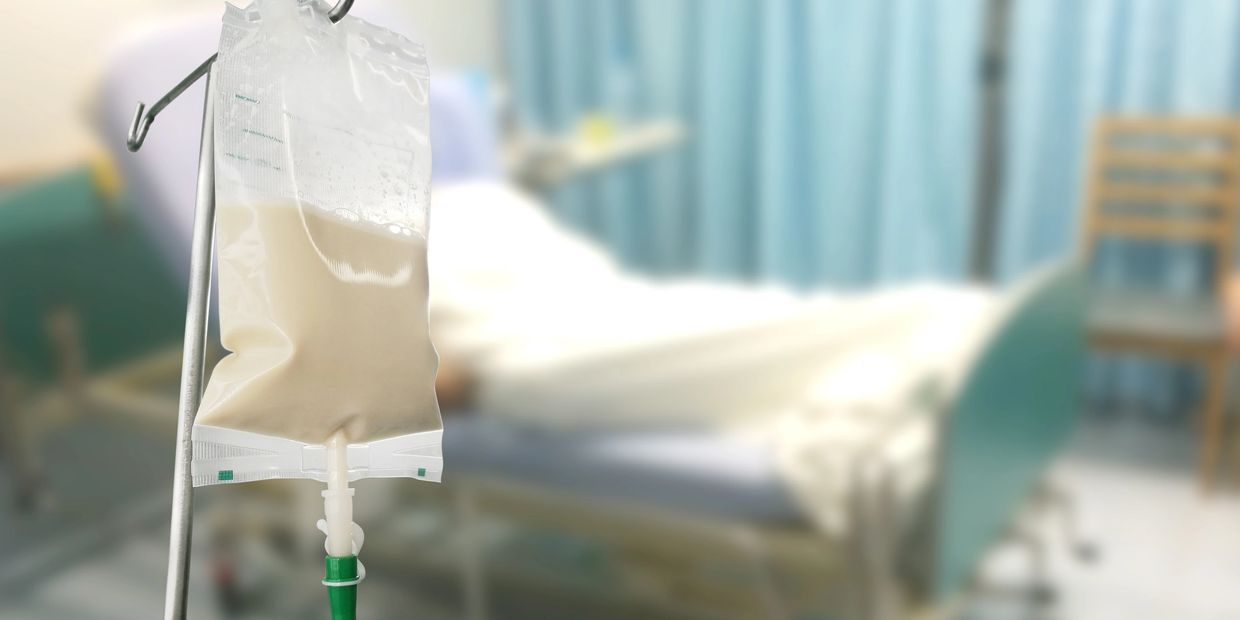Tube Feeding

G-Tube Feeding at Home
Care Basics and How GAPP Can Help
For many Georgia families, a G-tube (gastrostomy tube) makes feeding safer and more reliable, but it also adds daily tasks that can feel overwhelming. This guide covers routine care, safety, school coordination, documentation for GAPP, and where to get additional support. If your child has a G-tube and needs skilled help at home, GAPP (Georgia Pediatric Program) may cover in-home nursing at no cost to families who qualify.
G-tube basics
- A G-tube delivers food, fluids, and medication directly to the stomach.
- It may be used short-term after illness/surgery or long-term for conditions like cerebral palsy, prematurity/FTT, genetic syndromes, neurological disorders, or aspiration risk.
- Common types: button G-tube (e.g., MIC-KEY) and long tube; your care plan will specify brand/size.
Typical daily routine
Always follow your child’s provider orders. An average day often includes:
- Before feeds
- Hand hygiene; gather supplies
- Check tube position, skin/stoma, and balloon volume (if ordered)
- Position child with head elevated (per orders)
- Feeding
- Bolus or pump per plan; confirm rate/volume
- Flush with water before/after meds and feeds as ordered
- Vent/decompress if directed (to reduce gas/discomfort)
- After feeds
- Keep upright for ordered time (often 20–30+ min)
- Clean site; rotate button/extension if ordered
- Document any issues (coughing, gagging, leaking, discomfort)
- Safety checklist (pin it on the fridge)
- Keep emergency kit nearby: spare button/long tube (correct size), lubricant/syringe, tape/securement, stoma dressing, backup extension sets, and contact numbers.
- Know what “not right” looks like: redness/warmth, swelling, bleeding, foul odor, sudden leakage, vomiting, diarrhea/constipation, pain with feeds, fever, behavior change, or respiratory symptoms.
- If tube comes out: Follow your provider’s emergency plan. Many teams instruct families to place a spare quickly to keep the tract open and then call the GI clinic/ER.
- Aspiration prevention: Elevate head/torso for feeds; pause if coughing/retching; discuss venting and feed rate with your clinician.
- Medication safety: Use liquid meds when possible; check crushability and tube compatibility with the pharmacist/clinician.
Common troubleshooting
When to call your team
- Clogged tube: Stop feeds; try ordered flush protocol (warm water). If unresolved, call your GI team; do not use tools that can damage the tube.
- Leakage at site: Check balloon volume (if applicable), securement, or tube size; contact GI if persistent.
- Skin irritation/granulation tissue: Keep area dry; follow prescribed care (e.g., barrier, topical). Ask about silver nitrate only if instructed by your clinic.
- Vomiting/discomfort: Reassess rate/volume; consider venting; call provider for ongoing symptoms.
Emergency: Signs of respiratory distress, severe pain, black/tarry stools, blood in vomit, rigid abdomen, or tube displacement into the airway. Call 911 and follow your emergency plan.
Care in the Comfort of your Home
How GAPP can help (in-home nursing)
Children with G-tubes often qualify for skilled nursing through GAPP when documentation shows medical necessity. Nurses can help with:
- Pump setup & monitoring, bolus feeds, med administration via tube
- Venting and decompression; monitoring for aspiration risk
- Site care, stoma assessment, and troubleshooting
- Growth/weight tracking and coordination with GI/dietitian
- Education for parents and backup caregivers
- Documentation for renewals or hour increases
Documentation that strengthens approval
- Plan of Treatment (PPOT) listing skilled tasks + frequency (e.g., bolus feeds 5×/day, venting PRN up to 6×/day, med admin 3×/day)
- Recent GI/clinic notes, ED/hospital summaries, growth charts
- Feed/flush log (rates, volumes, tolerance, venting)
- Risk without nursing (aspiration, dehydration, weight loss, tube dislodgement, frequent clogging)
- If school-aged, add IEP accommodations; under 3, include therapy/early-intervention notes
School & community coordination
- Provide the Feeding Plan, med list, and emergency steps to the school nurse.
- Align IEP/504 accommodations: feeding times/locations, recovery period after feeds, bathroom access, storage and cleaning for equipment.
- For ages birth–3, enroll in Babies Can’t Wait (early intervention).
- Explore help from Children’s Medical Services (CMS), Parent to Parent of GA, FODAC (DME), and local partners (Bobby Dodd Institute, Avita Community Partners).
Supplies & equipment
- Button/long G-tube (correct size) + spare
- Extension sets (bolus & pump), enteral syringes, feed bags
- Tape/securement (per your team), split gauze/dressings, barrier cream
- Feeding pump + pole/backpack (as ordered)
- Water for flushes (as ordered), formula or blended diet supplies
- Emergency card with GI clinic, after-hours, and 911 guidance
Ask your provider/agency about DME vendors and coverage; many items are supplied through insurance/Medicaid with orders.
GAPP Parent Resources
When PSS/parent pay becomes possible
Under Georgia rules, Personal Support Services (PSS), the pathway that may allow a parent to be paid as a caregiver, is typically considered from age 4 or 5+. Until then, most support is skilled nursing. Keep daily logs and therapy notes now to smooth the transition when your child is eligible.
Step-by-step: getting started this month
- Confirm Medicaid (traditional, Katie Beckett, or SSI-linked).
- Start a feed/tolerance log (rate, volume, venting, symptoms).
- Ask GI clinic for updated notes & device orders; download via portal.
- Work with Miralta to assemble a complete GAPP packet (PPOT + logs + notes).
- Coordinate a school feeding plan (or early-intervention supports).
- Build an emergency kit and post your after-hours instructions.
FAQs
Does GAPP pay for G-tube nursing at home?
Yes, if medical necessity is documented (skilled tasks, frequency, and risks). Services are covered by Medicaid for eligible families.
Will we have to pay anything?
No, approved GAPP services are covered. Miralta provides free application support and may waive administrative fees for income-eligible families.
My child is under 4 - can I be a paid caregiver?
Typically GAPP will not cover your care at this age - however, ask your agency about other funding sources.
How long does approval take?
Often 4–6 weeks after a complete submission. Timelines are currently backed up, so “right-the-first-time” packets matter.